
One of those men was Henry Marshall, whose death—he was shot five separate times in the chest with a rifle—was ruled “a suicide.”
[This article follows CAM’s series on political assassinations.—Editors]
On June 3, 1961, Henry Marshall was found dead on his farm near Bryan in Robertson County, Texas. He had been shot five times with his own rifle.
Marshall, 51, had worked as a clerk with the Robertson County office of the Agricultural Adjustment Agency (AAA), holding a senior post in the agency. In 1960, he was asked to investigate the activities of Billie Sol Estes, a wealthy benefactor of Lyndon B. Johnson, whom he found to have engaged in an illegal scheme to buy cotton allotments.

According to Barr McClellan, who worked for the Austin, Texas, law firm of Clark, Thomas & Winters which represented Lyndon Johnson, Johnson had enlisted Billie Sol Estes to help him raise money to defeat John F. Kennedy in the 1960 Democratic Party primary. The two had a close relationship dating back to the 1950s.
Heralded in local media as the “wonder boy of Texas agriculture,” Estes had pioneered the use of irrigation pumps that were run by natural gas (which was less expensive than electricity) and by discovering the benefits of anhydrous ammonia as fertilizer.[1] A master at using the government for enrichment, Estes, according to a confession he gave after he was released from prison in 1984, became Johnson’s cutout for $10 million in illegal kickbacks ($100 million in 2022).[2]

When LBJ wanted large sums of money, Billie Sol gave it to him; in return he received key government contracts—the price being kickbacks to LBJ whenever he wanted it. McClellan wrote that “this way of doing political business in Texas was nothing short of a banana republic.”[3]

Texan protest singer Phil Ochs wrote in “The Ballad of Billie Sol”:
Stand tall, Billie Sol, we don’t know you at all,
We’ve taken down your pictures from the wall.
Well, we don’t want to handle an agriculture scandal,
We have got to face elections in the fall.
Ochs continued: “And now I’d like to say, that crime sure doesn’t pay,
But if you’d like to make some money on the sly, well you can always rent, the U.S. government, it’s the best one that money can buy.”

After meeting with Estes’s lawyer, John P. Dennison, following his report about the illegal purchase of cotton allotments, Marshall was offered a promotion at a higher salary.
The catch was, he would have to relocate to Washington, D.C., and discontinue his investigation of Billie Sol Estes. Marshall understood that the promotion and salary increase were a bribe to remove him from the case, and refused. A. B. Foster, manager of Billie Sol Enterprises, subsequently wrote to Clifton C. Carter, a close aide to Lyndon B. Johnson, asking for “his help in investigating Marshall and seeing if anything can be done.”
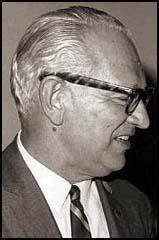
A few months later, Marshall—who had devoted his entire life to assisting farmers and ranchers, according to Estes[4]—was killed.
Soon after his death, Robertson County Sheriff Howard Stegall declared that “the sonavabitch shot himself” and had “committed suicide”—even though he had been shot in the chest five times, and had an eye split open and broken arm.[5]
Stegall happened to be a close friend of Clifton Carter, Johnson’s connection to the Texas mafia who was from Robertson county. His cousin Glynn Stegall worked in the Executive Office Building within Vice President Johnson’s suite of offices, next door to the White House.[6]

During the course of the sheriff’s “investigation,” no pictures were taken of the crime scene, no blood samples were taken of the stains on the truck (the truck was washed and waxed the following day), no check for fingerprints was made on the rifle or pickup. And no suicide note was ever found.[7]
“To Me It Looked Like Murder”
Marshall’s wife (Sybil Marshall) and brother (Robert Marshall) refused to believe that Henry had committed suicide and posted a $2,000 reward for information leading to a murder conviction.
Marshall had been beaten so fiercely that one of his eyes hung out of its socket and his blood was found on both sides of the dented truck.[8]

Dr. Joseph A. Jachimczyk, the Harris County medical examiner, said he believed that Marshall’s case was not a suicide. A Houston medical examiner explained that at least three of the five shots were debilitating—meaning it was impossible for him to have shot himself five times.[9]
The undertaker, Manley Jones, reported: “To me, it looked like murder. I just do not believe a man could shoot himself like that.” The undertaker’s son, Raymond Jones, told journalist Bill Adler in 1986: “Daddy said he told Judge Farmer there was no way Mr. Marshall could have killed himself. Daddy had seen suicides before. JPs [justices of the peace] depend on us and our judgments about such things. We see a lot more deaths than they do. But in this case, Daddy said, Judge Farmer told him he was going to put suicide on the death certificate because the sheriff told him to.”[10]

“The Man Who Left This World Under Questionable Circumstances”
Arkansas Senator John McClellan (D) convened hearings in July 1962 of a subcommittee of the Senate Committee on Government Operations on Billie Sol Estes’s wheeling and dealing in which Orville Freeman, the U.S. Secretary of Agriculture from 1961 to 1969, referred to Marshall as “the man who left this world under questionable circumstances.[11]
At the hearing, Senator McClellan posed for photos with the .22 caliber rifle that had killed Marshall, and stretched his arms and pointed the rifle at his chest to show the impossibility of Marshall having killed himself in the way he had allegedly done. “It doesn’t take many deductions to come to the irrevocable conclusion that no man committed suicide by placing this rifle in that awkward position and then [cocking] it four times more,” McClellan said.


The McClellan subcommittee ultimately reported that it could find no link between Marshall’s death and his efforts to bring an end to Billie Sol’s cotton allotment scheme, though a minority report concluded: “We believe there is sufficient evidence to show that Marshall considered the Estes transaction not to be bona fide, and that he was attempting to gather sufficient information to put a stop to them.”[12]
“How Can One Man Fire Five Shots at Himself?”
Even FBI Director J. Edgar Hoover did not believe the suicide theory. On May 21, Hoover scrawled on a memo: “I just can’t understand how one man can fire five shots at himself.”[13]

Tommy G. McWilliams, Jr., an FBI agent in Waco, Texas, from 1952 to 1968, presented a scenario in which Marshall shot himself, and then realizing he was not dead, tried to inhale carbon monoxide from the exhaust pipe of his truck, pulling his shirt over his head to breathe the toxic fumes (Dr. Jachimczyk found 15 percent concentration of carbon monoxide in Marshall’s body, which he said had been as high as 30% at the time of his death).

According to McWilliams, Marshall became unconscious, and fell smashing his forehead on the pipe. He then bled to death from one of his gunshot wounds.
This scenario was implausible since Marshall’s shirt was tucked into his trousers when his body was found. He would thus have had to have tucked his shirt in after having pulled it over his head to breathe the toxic fumes which, according to McWilliams, rendered him unconscious.
Dr. Jachimczyk further noted that, if Marshall had indeed used his shirt to make a hood over the exhaust pipe, soot would have been found on the shirt—which it was not.
Of further significance was the fact that Marshall was right-handed; for the bullets to have entered where they did, Marshall would have had to have shot himself with his left hand.[14]
Also, the plastic bag through which the carbon monoxide allegedly entered his body was found a hundred yards away from the crime scene under a bush where someone had clearly placed it.[15]
Utterly Impossible
In a July 13 letter to Colonel Homer Garrison, Director of the Texas Department of Public Safety, Texas Ranger Clint Peoples—one of the most honored law enforcement officers in Texas history—reported in detail his findings on Marshall’s death. Peoples’ conclusion: “It would have been utterly impossible for Mr. Marshall to have taken his own life.”[16]

In a 1984 oral history, Peoples said that “political pressure” had prevented a proper investigation into Marshall’s death. Peoples himself continued to investigate the crime until he died in a car accident in 1992.[17]
According to Peoples, the motive behind Marshall’s murder related to the cotton allotment program which was being used by Billie Sol Estes and Lyndon B. Johnson to defraud taxpayers of millions of dollars per year. Peoples said that Marshall was killed because he was “blowing the whistle on Billie Sol Estes” and some “big politicos who had collaborated with him [notably Johnson].”[18]
Corruption of 1962 Grand Jury Investigation
According to researcher Phillip F. Nelson, the 1962 grand jury investigation into Marshall’s death was “stacked” by the sheriff, Howard Stegall, who, Marshall’s son Donald said, “hand picked the grand jury” to include “three or four members of the Stegall clan.”
The person who took charge of the proceedings was Sheriff Stegall’s son-in-law Pryce Metcalfe, a local store owner who claimed that the laceration on Marshall’s head and his protruding left eyeball were caused by Marshall “falling or agitation of the body during the process of dying.” One of the grand jurors remarked that Metcalfe used “all his influence to be sure the grand jury came out with a suicide verdict.”[19]
The Department of Agriculture’s file on Billie Sol Estes was turned over to Harold Barefoot Sanders, the U.S. Attorney for the Northern District of Texas appointed by Johnson who had been sent to Robertson County by Johnson with the understanding that anything presented to the grand jury would be censored by him and that the suicide verdict would be made to stand.[20]

Johnson also enlisted the assistance of J. Edgar Hoover, who sent an inexperienced FBI agent to Robertson County to further derail the murder investigation.[21]
Robert Kennedy Participates in the Coverup
In 1984, former Texas Attorney General Will Wilson (1955-1962) told the Dallas Morning News that federal officials refused to cooperate with the state of Texas’s investigation into Marshall’s death, which he said was very evidently not a suicide.
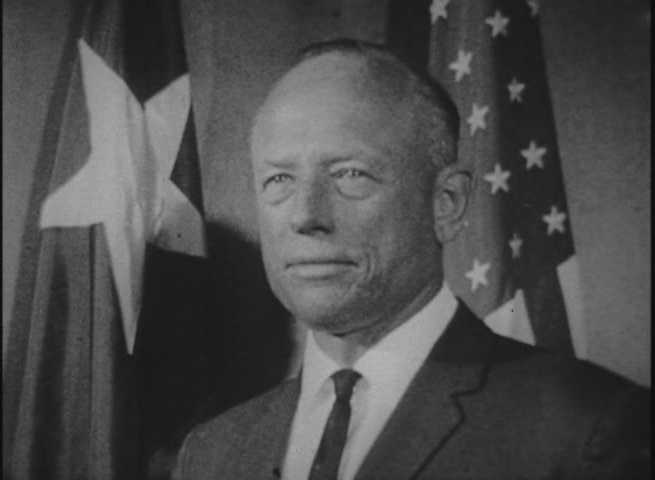
According to Wilson, a right-wing enemy of Johnson, the U.S. Department of Justice, then headed by Robert Kennedy, refused to turn over various reports and documents to aid the Grand Jury’s investigation, including a 175-page Department of Agriculture file.[22]
The reason is not too hard to discern: as much as RFK hated Johnson, revelations about the vice-president being connected to an agricultural scandal and crook like Estes and the murder of a government official would have been a black mark on the Kennedy administration and ruined JFK’s chances for reelection in 1964—even if Johnson was dropped from the ticket.[23]
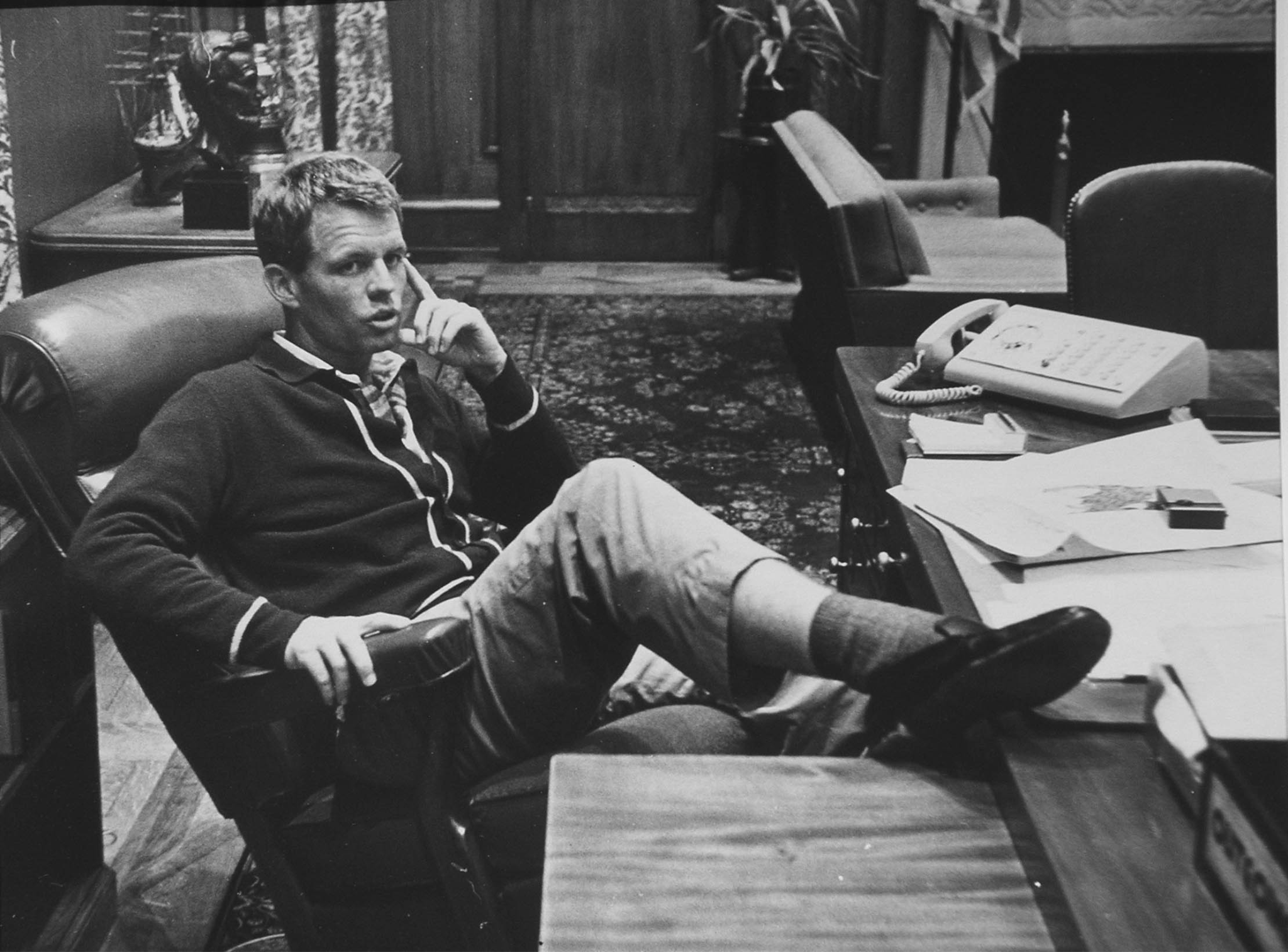
Local Authorities Trick an Eyewitness
The 1962 grand jury heard testimony from a Hearn gas station attendant, Nolan Griffin, who said that reading about the case in the newspapers reminded him of a man driving a Plymouth or Dodge station wagon who stopped by his gas station to ask “where the Marshall place was” around the time when Marshall allegedly committed suicide.
The following day, the man came back and, in an attempt to cover his tracks, said “you gave me the wrong Marshall but that’s all right. I got my deer lease [license].”
Griffin subsequently received an anonymous phone call warning him to keep an eye on his children and to watch what he said. The Hearn police chief also visited him at work and asked him to go to the office of Bryan Russ, the county attorney.
When he went, Russ was there with Sheriff Howard Stegall; the two handed him a pen, shoved a paper under it and told him to sign it. What he signed, unwittingly, was an affidavit that helped discredit the testimony he gave to the grand jury and gave weight to the local authorities and FBI’s suicide theory.[24]

Bombshell Revelations 22 Years Later
On March 20, 1984, 22 years after Marshall’s death, Billie Sol Estes was back in the Robertson County courthouse to testify before a grand jury[25] about what had happened.
Billie Sol Estes had gone to prison in 1965 for fraud relating to a scam he orchestrated in which he had reported on phantom fertilizer tank sales in order to secure more lucrative loans. Paroled in 1971, Estes was sent back to prison in 1979 for mail fraud and nonpayment of income taxes.

After his release a second time from prison, Billie Sol Estes said that he decided to testify before the grand jury and tell the truth about Marshall’s death in order to keep a promise he had made to Clint Peoples who had escorted him to federal prison near El Paso in 1979.[26]
Billie Sol Estes told the grand jury what everyone suspected from the beginning: that Henry Marshall did not kill himself, that he was murdered for fear he would blow the whistle on Billie Sol’s cotton allotment scam.
Estes went on to suggest that Marshall was murdered on orders of the then newly elected vice president, Lyndon B. Johnson, who was afraid Marshall might link him to Billie Sol’s frauds and that they would all go to the penitentiary. The orders went through Clifton C. Carter, who had run Johnson’s Senate campaigns and for many years “did Johnson’s dirty work,” according to a Texas political insider.[27]
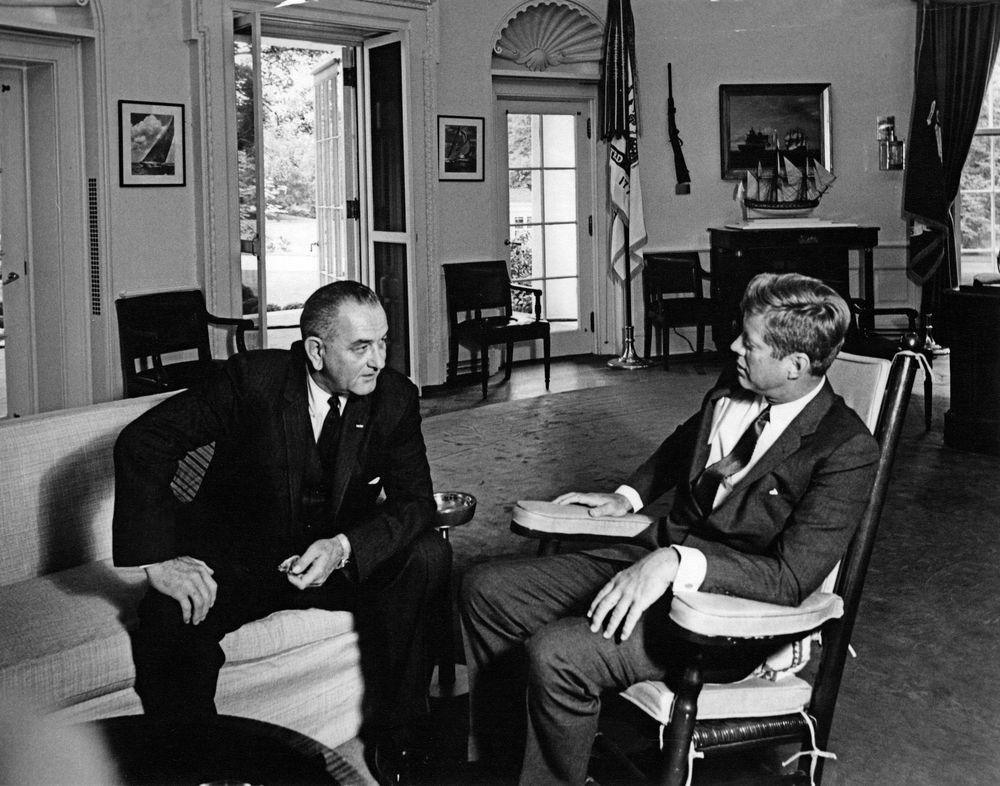
Billie Sol told the grand jury that Carter ordered Marshall to approve 138 cotton allotment transfers as a favor repaying Billie Sol for campaign contributions.
On January 17, 1961, Marshall told Billie Sol’s lawyer John Dennison the scheme was illegal and a few days later, Billie Sol said he, Johnson, Carter and Malcolm Everett “Mac” Wallace, a Johnson political operative whom Estes named as the hitman, gathered in the backyard of Johnson’s Washington home to plot Marshall’s murder.[28]
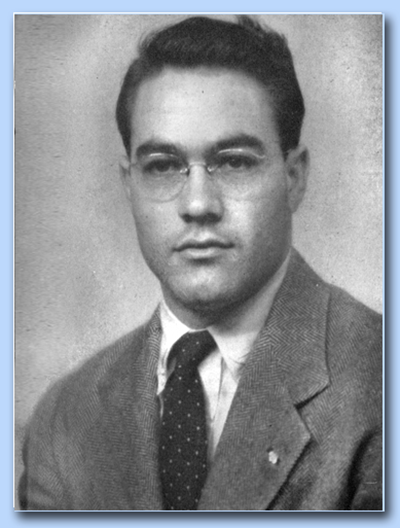
Estes said he had proposed that Marshall be promoted and moved to another department but, after he refused to take the bribe, Johnson said: “It looks like we’ll just have to get rid of him.”[29]
Apparently, Marshall was supposed to go to Washington to meet with Attorney General Robert Kennedy personally as a whistleblower, and that they all were going to end up in a penitentiary if something was not done.[30]
Billie Sol went on to say that he, Carter and Wallace—the one to ask for directions at the Hearn gas station—had met at Billie Sol’s home in Pecos after Marshall was killed.
Billie Sol said Wallace described waiting for Marshall at his ranch; he had planned to kill him and make it look as if Marshall committed suicide by carbon monoxide poisoning. Wallace said there had been an awful scuffle before he overwhelmed Marshall and put a plastic bag over his head and the exhaust pipe of Marshall’s pick-up truck.
Wallace said further that he was in the process of gassing Marshall when he heard a car coming. Afraid someone would see him, Wallace panicked and shot Marshall five times at point-blank range with Marshall’s .22 caliber rifle. Billie Sol quoted Carter as saying “Wallace sure did botch it up.”[31]
It is not known if Estes’s story is true, as he provided no corroborating evidence, and Estes had a reputation as a swindler and con man. Estes’s daughter Pam told an interviewer not long after the grand jury proceeding, though, that “even liars sometimes tell the truth.”[32]
Suicide Ruling Overturned
After Estes’s testimony, the 1984 Robertson County grand jury decided unanimously to overturn the 1961 suicide ruling. District Attorney John Paschall said that, “with the evidence we were presented, we know it not to be a suicide but a homicide. That’s what it should have been all along.”[33]
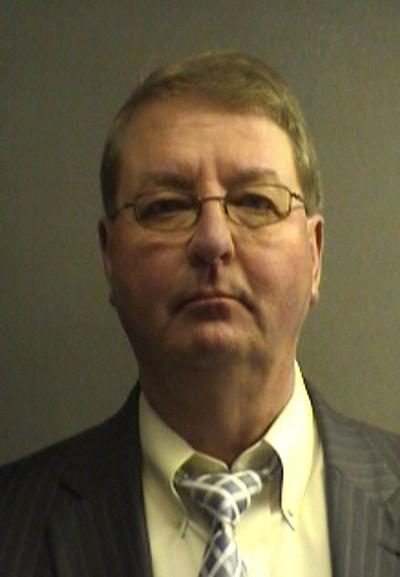
A state district judge subsequently ordered the death certificate changed to “homicide.”[34] But Lyndon Johnson was never officially charged with the crime and most historians ignore or dismiss evidence that he was behind it.[35]
Was LBJ a Serial Killer?
Henry Marshall may have been one of many victims of Johnson—and Mac Wallace.
A product of Texas’ frontier culture, Johnson was a man of great ambition and explosive temper whose powers of cunning and the manipulation of people were developed from a childhood spent as a disobedient class bully. Johnson’s violent proclivities were visible early in his life in an incident where he took dynamite and blew up a dog in the town square of Johnson City.[36]
Crude, vulgar and controlling, he is believed to have suffered from a manic depressive disorder. Johnson’s grandmother had declared “that boy [Lyndon] is going to end up in the penitentiary.”[37]


Denis Healey, who as British Secretary of State for Defense in 1967 was Robert S. McNamara’s opposite number, said that “Lyndon Johnson was a monster. He was one of the few politicians with whom I found it uncomfortable to be in the same room. Johnson exuded a brutal lust for power which I found most disagreeable.”[38]

Many of Johnson’s crimes were triggered by the great sin that enabled him to win high political office: his engaging in ballot-stuffing in a 1948 runoff election in the Democratic primary for U.S. Senate.
Johnson lost the race to incumbent Governor Coke Stevenson by 114 votes—until 200 extra votes were magically produced in Alice, Texas, through bribery in what became known as the “Box 13 scandal.”[39]


Johnson’s first murder victim appears to have been Sam Smithwick, a deputy sheriff who worked under George Parr, a county judge and sheriff in Duval County who functioned like a ward boss in the old machine political system.
Early in 1952, Smithwick wrote to Coke Stevenson informing him that he was ready to testify about the election fraud and could produce the missing ballot box that Luis Salas, a clerk, had kept out of court proceedings in Alice three years earlier.
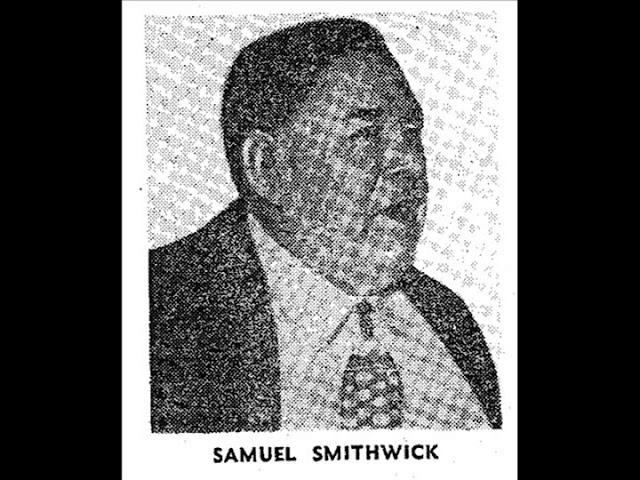

Smithwick at the time was in state prison in Huntsville, convicted of the murder of a local radio talk show announcer, William H. Mason, who had criticized the Parr regime.

Before he could testify about the election fraud, guards cornered him in his cell in Huntsville and strangled him, hanging his body from steel bars on his cell’s gate by his bed.[40]
The prison coroner quickly ruled Smithwick’s death a suicide, though no one believed it was suicide. According to the few reports on the killing, the death “stunk to high heaven” and “reeked of corruption.” In 1956, Governor Allan Shivers gave a speech accusing Johnson of murder—though he was never charged.[41]
According to McClellan, Smithwick’s murder was set up after the 1948 election when Johnson’s attorney Edward A. Clark—whom Reader’s Digest termed the “secret political boss of Texas”—had arranged for Hubert Hardison “Pete” Coffield, who had enriched himself on surplus government property after the war, to serve on the State Board of Prisons.
McClellan wrote that a Texas tradition was involved whereby, in the prison system, insiders are needed to do the dirty work of controlling convicts and establishing a special guard squad for the purpose of controlling or eliminating problem prisoners.[42]


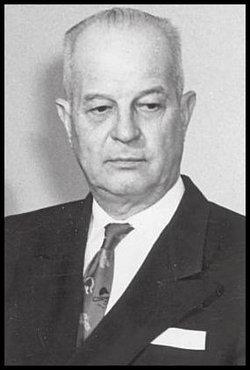
LBJ’s Hitman?
Described by Billie Sol Estes as a “stone killer,” Mac Wallace functioned, according to McClellan, as Johnson’s favored hitman. Estes told attorney Doug Caddy that Johnson would transport Wallace on military planes so there would be no record of his travels on commercial airlines.[43]
Born in Mount Pleasant Texas in October 1921, Wallace had been a star football player, U.S. Marine, and president of the University of Texas student body in the 1944-45 school year.
A man of “muscular build, ruddy complexion, and tortoise-rimmed glasses” known for holding liberal views on labor and “the racial question,” Wallace organized a large student strike in October 1944 after the firing of university president Homer Rainey for trying to block the Board of Regents firing of four tenured economics professors who supported the New Deal.

Wallace then became a key organizer for Rainey’s 1946 failed gubernatorial campaign, which challenged Coke Stevenson.[44]

After obtaining a Master’s degree, Wallace taught college economics before accepting a research economist’s job with the USDA, a repository for CIA agents.
Wallace obtained the latter job through his connection with Lyndon Johnson whom he did odd jobs for in Texas, including strong-arming businessmen, from September 1949 to October 1951.[45]

Described by classmates as a gifted intellectual and idealist, Wallace also had an explosive temper. On October 22, 1951, a week after his 30th birthday, he walked into the clubhouse of an Austin golf course, ordered a pack of cigarettes and then shot the attendant, John Douglas Kinser, a World War II veteran and amateur actor who had been sleeping with his wife, Mary André, and Lyndon B. Johnson’s sister, Josefa.[46]
Wallace had earlier discovered that his wife and Josefa—who was described as “tall, beautiful and wild”—were involved in Austin’s underground gay culture, including a lively night-time cruising scene in Zilker Park.
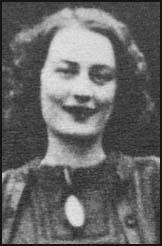
Josefa was also associated with a sex group in the Austin community theater with Mary André and Kinser. Kinser thus represented a threat to Johnson due to his first-hand knowledge of the secret of his sister’s scandalous sex life.[47]
Josefa furthermore allegedly told Kinser about illicit dealings between George Brown, co-founder of Brown & Root Inc., and Lyndon, while drunk (Brown had bankrolled Johnson’s political career in return for huge construction contracts for Brown & Root, a company “filled with CIA assets,” according to Joan Mellen).[48]
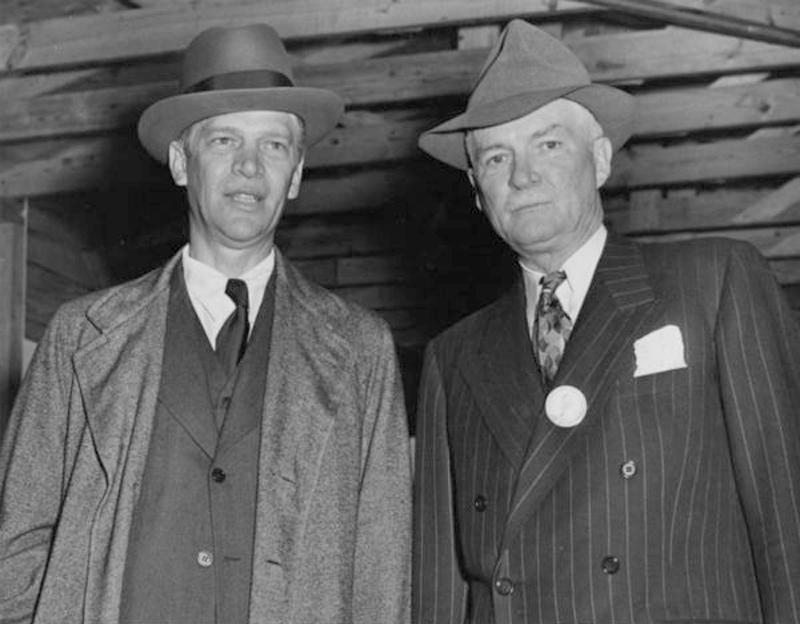
In February 1952, Wallace was convicted of murder by a Travis County court but given only a five-year suspended sentence when the death penalty should have been mandatory. [49]
After the trial, several of the jurors telephoned Kinser’s parents to apologize for voting for a suspended sentence but said they did so only because threats had been made to their families, according to Al Kinser, a nephew of the convicted murderer.

The juror that pushed the others into supporting a suspended sentence, D.L. Johnson, a retired Highway Department employee, admitted in 1986 to being a cousin and good friend of one of Wallace’s defense attorneys.[50]


Johnson admitted to his longtime mistress Madeleine Brown that he had helped get Wallace off the hook, stating allegedly, “hell, I’ve got friends in Austin who owe me favors. I’m going to call in my markers for Wallace’s trial. Madeleine, I can’t have this bullshit embarrassing my family.”[51]
Because Wallace had been spared a life sentence [in Kinser’s death] by Johnson’s intervention, he was the perfect man to work in the shadows carrying out his dirty work for many years. McClellan writes: “Johnson and Edward A. Clark [prominent Austin attorney who worked for the law firm that represented Johnson] owned Wallace and they would never let him break free.”[52]
Lucianne Goldberg, a literary agent, said that she saw Wallace at Johnson campaign headquarters at the Ambassador Hotel in Austin, indicating that he worked for Johnson. Wallace had told Austin police investigator Marion Lee after his arrest for John Douglas Kinser’s murder that “he was working for Mr. Johnson and that’s why he needed to get back to Washington [he worked as an economist with the Department of Agriculture in a position secured for him by Johnson].[53]
When Wallace took a job with a security contractor in California, Ling-Temco-Vought or LTV, in 1961, he was given a security clearance despite his murder conviction. A Navy intelligence officer handling Wallace’s case told Clint Peoples that the clearance was arranged by Johnson.[54]
The company founder, James J. Ling, was close with Johnson and was reported to have contributed a quarter of a million dollars to the 1960 Kennedy-Johnson campaign.[55] Temco, the Dallas based military contractor where Wallace worked before going to California (and before the merger), was owned by D.H. Byrd who was part of the Suite 8F Group, “right-wing Texas tycoons” who “financed the rise of LBJ.”[56]


Both Byrd and Ling made huge insider buys of LTV stock in the weeks before the JFK assassination, with the stock’s value rising from $2 million to $26 million by 1967, after LBJ’s escalation of the Vietnam War.[57]
Wallace died in a car wreck in East Texas in 1971 at the age of 49 after he allegedly fell asleep at the wheel.[58]

Wallace’s last wife, Virginia Ledgerwood (married 1963-1970) of Anaheim, California, told the Dallas Times-Herald in 1984 that Wallace told her that he knew LBJ. “Mac had been acquainted with the Johnsons,” she said, “He told me he knew Mrs. Johnson better than Mr. Johnson.”[59]
An Urban Legend?
Wallace’s family disputed Mac’s involvement in Marshall’s death as they claimed he had an alibi: They said he had been in Anaheim, California where he lived entertaining his brother, Harold David Wallace, and thirteen year old son Michael, and spent the day of June 3, 1961 at the beach—meaning he couldn’t have been the one to kill Marshall.[60]
Though believing that Estes and Johnson were in on Marshall’s murder, District Attorney John Paschall, reasoned that Marshall’s killer had to have been someone Marshall knew was coming and who was familiar with his ranch because he had parked his truck in the middle of the property and at the front gate.
Estes himself said that there were two people present at the scene of Marshall’s death and pointed to the existence of a mysterious car.[61]
Nolan Griffin meanwhile identified the man with horn-rimmed glasses who asked for directions to Marshall’s ranch on June 3 at his gas station and then came back the next day as having a facial scar, when the photographs taken of Wallace at the Kinser trial reveal no facial scars.[62]
Though Mac Wallace also wore eyeglasses, a sketch of the man looked a lot actually like Billie Sol Estes.[63]
So in short, Wallace may not have been Marshall’s killer, or LBJ’s hitman—which could be part of an urban legend[64]—although there are serious grounds for suspicion.
Taking Care of People for Good
According to Barr McClellan, Billie Sol Estes had in his possession a list that he said came from Cliff Carter that included eleven people Mac Wallace had killed on Johnson’s orders. McClellan says that his information confirms eleven, with nine more possible.[65]
There is one memo on record at the LBJ Library in Austin detailing correspondence between Johnson and Edward A. Clark in which Clark discusses “taking care of Lucas’ friend for good,” which suggests murder.[66]
Three people with intimate connections to Billie Sol Estes were murder victims, including his chief accountant, George Krutilek, age 49, whose body was found two days after he was questioned by the FBI about Estes’s corruption (and a day before Estes’s indictment).
Krutilek’s body was discovered in the sand hills near Clint, Texas, allegedly with a hose attached to the exhaust pipe of his pickup. An El Paso pathologist concluded, however, that carbon monoxide was not the cause of death and found that Krutilek had a severe bruise on his head.[67]

Estes later testified that Krutilek had been murdered by Wallace to protect Johnson.
Three other business associates of LBJ, Harold Orr, the president of the Superior Manufacturing Company of Amarillo, Texas who had been arrested with Estes in April 1962, Howard Pratt, Billie Sol’s fertilizer supplier, and Coleman Wade, a building contractor from Altus, Oklahoma arrested for his role in the Billie Sol Estes fraud, were named by Estes as among Wallace’s victims. Orr and Pratt allegedly committed “suicide,” and Wade died in a suspicious plane crash outside of Kermit Texas.[68]
Estes also said that Wallace had murdered Johnson’s sister Josefa, 49, who after attending a Christmas Eve party at the LBJ Ranch on December 25, 1961, returned home to nearby Fredericksburg and died during the night, supposedly of a cerebral hemorrhage.
Despite state law, no autopsy was ever conducted, and the doctor who signed the death certificate did not bother to examine Josefa’s body. On December 26, Josefa was hastily buried on the LBJ ranch.[69]
Estes said he was told by Cliff Carter that Josefa had been poisoned at the Christmas party. She had kept her mouth shut after the Kinser murder, but soon after there had been additional reports of her talking and it was decided she could never be trusted.[70]
However, Josefa was raising Rodney White, Johnson’s illegitimate son, so LBJ probably wouldn’t have actually killed her.[71]

There is further suspicion about Cliff Carter, who died in 1971 at the age of 58 purportedly of pneumonia. Billie Sol Estes claimed that the latter cause of death was promoted by “the Johnson clan,” which was paranoid about Johnson’s legacy.
According to Estes, Carter was found dead in a cheap Virginia motel—only a day and a half after Estes had seen him in good health—when he was reported to have died in a Virginia hospital.[72]
Greed, Ambition, Corruption and Coverup
Journalist Bill Adler wrote in The Texas Observer that “around Henry Marshall’s life swirled the gale forces of national power politics in its rawest form: greed, ambition, corruption and cover-up.”[73]
At the end of his life, Lyndon Johnson was a broken man, haunted by all of the violence and bloodshed that enabled his rise to power.
The lies and deceit he adopted to sell the war in Vietnam—which Billie Sol Estes said was tied to a scheme by Johnson and his donors to advance their own wealth[74]—were but a continuation of the practices he had adopted throughout his political career.
*The author would like to thank Robert Morrow for his help with this article.

-
Barr McClellan, Blood, Money, & Power: How LBJ Killed JFK (New York: Skyhorse Publishing, 2011), 125. Time Magazine put Estes on its cover, calling him “a welfare-state Ponzi … a bundle of contradictions and paradoxes who makes Dr. Jekyll seem almost wholesome. He considered dancing immoral, delivered sermons as a Church of Christ lay preacher,” the magazine wrote. “But he ruthlessly ruined business competitors, practiced fraud and deceit on a massive scale, and even victimized Church of Christ schools that he was supposed to be helping as a fundraiser or financial adviser.” ↑
-
See Gus Russo, Live By the Sword: The Secret War Against Castro and the Death of JFK (Bancroft Press, 1998), 283. ↑
-
See McClellan, Blood, Money, & Power; Phillip F. Nelson, LBJ: From Mastermind to “the Colossus” (New York: Skyhorse, 2014), 256; Joan Mellen, Faustian Bargains: Lyndon Johnson and Mac Wallace in the Robber Baron Culture of Texas (New York: Bloomsbury, 2016), 123. Kyle Brown stated that as a young man, he often carried cash—$50,000 to $100,000—between Billie Sol Estes and Cliff Carter to be delivered to Johnson. ↑
-
Billie Sol Estes, Billie Sol Estes: A Texas Legend (Granbury, TX: Billie Sol Productions, 2005), 87. ↑
-
Mellen, Faustian Bargains, 143, 144. ↑
Philip Nelson, LBJ: The Mastermind of the JFK Assassination (New York: Skyhorse, 2013)., 4; Estes, Billie Sol Estes, 85, 86, 91. A lawyer from Smithville, Texas, Cliff Carter was a decorated World War II veteran who served under Captain Ed Clark, LBJ’s attorney. Carter owned the 7-up bottling company in Bryan, Texas, 35 minutes from the Robertson County courthouse, and occasionally played poker with Henry Marshall. According to Billie Sol Estes, Marshall was under Carter’s influence for many years. Marshall’s brother-in-law, I.M. Owens was an employee of Carter’s company. Ralph Yarborough characterized Carter as Johnson’s political bagman and said of him: “Lyndon could trust him to pick up the money and keep his mouth shut.” First working for Johnson as a volunteer in Johnson’s successful bid for the House of Representatives in 1937, Carter adopted smear tactics against Yarborough and compiled dossiers on Johnson’s political rivals. Close to Billie Sol Estes and Bobby Baker, Carter became executive director of the Democratic National Committee during Johnson’s presidency and chief fundraiser for the President’s Club, a DNC offshoot. In 1966, he was forced to resign after ethical questions were raised about his fundraising techniques. When he died in 1971 at the age of 58, his long-time secretary, Edna Moelhman said: “He just worked himself to death for Lyndon Johnson.” ↑
-
McClellan, Blood, Money, & Power, 159. ↑
-
Nelson, LBJ, 4. According to Texas Ranger Clint Peoples, flesh was coming out of Marshall’s arms, hands, and legs. Henry’s brother Robert said that Henry had no monetary or personal reasons to kill himself and in fact “had everything to live for,” as he and his wife had just had a little boy (Donald) after losing two children, which made him, according to Robert, “the happiest person in the world.” Roger Stone, with Mike Colapietro, The Man Who Killed Kennedy: The Case Against LBJ (New York: Skyhorse Publishing, 2013), 203. ↑
-
McClellan, Blood, Money, & Power, 172. ↑
-
Bill Adler, “The Killing of Henry Marshall,” The Texas Observer, November 7, 1986, https://issues.texasobserver.org/pdf/ustxtxb_obs_1986_11_07_issue.pdf. ↑
-
Adler, “The Killing of Henry Marshall,” 15. Orville Freeman was a protégé of Hubert Humphrey (D-MN), a close LBJ ally who served as his vice-president. Freeman later headed Business International Corporation (BIS), a CIA front company that Barack Obama worked for after graduating from Columbia University in the early 1980s. ↑
-
Adler, “The Killing of Henry Marshall,” 17. McClellan was a close friend of Lyndon Johnson whose name did not appear in the final report. ↑
-
Adler, “The Killing of Henry Marshall.” ↑
-
Adler, “The Killing of Henry Marshall,” 13, 14. ↑
-
Nelson, LBJ, 16. ↑
-
Adler, “The Killing of Henry Marshall,” 13, 14. ↑
-
Nelson, LBJ, 4, 15, 16, 46, 47; “Clint Peoples Oral History with the Dallas Public Library,” November 21, 1984, https://robertmorrowpoliticalresearchblog.blogspot.com/search?q=clint+peoples; Madeleine Duncan Brown, Texas in the Morning: The Love Story of Madeleine Brown and President Lyndon Baines Johnson (Baltimore: The Conservatory Press, 1997), 85. Madeleine Brown, LBJ’s former mistress, believes that Peoples was murdered, as she says that his car was pushed off a Texas highway by a larger truck, and that People’s wrists showed marks from handcuffs. She also said that Peoples and his family were threatened before his death. When Peoples’ assistant, Georgia, went to the funeral home for the viewing, a woman allegedly came up to her, according to Brown, and told her not to tell anyone else, but that she had witnessed the incident where Peoples was killed and said it was “no accident.” Clint’s car was pushed off the road from behind by a “big red truck” and the weather was clear and the road dry. The driver of the truck did it intentionally, she said, and then left the scene. She said she did not want to get involved with the case further because “too many people have been killed.” Just prior to his death, Peoples claimed to have matched Mac Wallace’s fingerprint to the sniper’s nest in the Texas Book Depository on the day of JFK’s assassination. He was planning to hold a press conference where he was going to announce his findings and their significance in proving that Lyndon Johnson was involved in John F. Kennedy’s assassination. The fingerprint evidence was confirmed by a fingerprinting expert, Nathan J. Darby of the Austin, Texas police department, though contested by other experts. ↑
-
Nelson, LBJ, 9. ↑
-
Nelson, LBJ, 11, 12; Estes, Billie Sol Estes, 91; Mellen, Faustian Bargains, 151. Billie Sol Estes told Madeleine Brown years later that he believed someone was deliberately placed on the jury to “hang it,” to prevent a forthright honest verdict. Brown, Texas in the Morning, 149. Clint Peoples related in a 1984 oral history that the Agricultural report took a good while to get to the Grand Jury and they played “ring around the rosie” with it for years and censored it. Peoples’ said that Sanders had been sent to Robertson County by Bobby Kennedy and Lyndon Johnson to look into this thing, and try and get this thing cooled, which he said they succeeded in doing. ↑
-
Nelson, LBJ, 12, 13. A close associate of Lyndon Johnson since the 1940s from his days as president of the student body at the University of Texas, Sanders should not have been there as his appointment was in the Northern District of Texas, and Robertson County was in the Western District; Sanders was rewarded by President Johnson in 1965 by being appointed Assistant Attorney General. ↑
-
Nelson, LBJ, 13. ↑
-
David Hanners, “Ex-Texas Official Says U.S. Wouldn’t aid ‘62 death probe,” Dallas Morning News, April 14, 1984. Wilson had earlier called for a Congressional investigation of “widespread evidence” that “Washington political influence” (ie. Johnson) was used on behalf of Estes. Wilson said the courts of inquiry he had conducted had produced evidence that Estes received “substantial favors” from the Agriculture Department. Wilson said that the Kennedys were following Estes developments on an hour-by-hour basis. In an April 14, 2023 interview, former Secret Service agent Abraham Bolden said that on the evening of June 29, 1961 at 7 P.M., just three and a half weeks after Marshall’s murder, he witnessed a volcanic argument in the Oval Office between Johnson and JFK and RFK, in which Johnson screamed out: “are you bastards trying to send me to prison over some goddamn cotton!”
-
Johnson was already a liability because of his connection with Bobby Baker, his Senate aide, who was convicted of tax evasion and implicated in an assortment of illegalities also involving Johnson. James Wagenvoord, assistant to Life Magazine’s Creative editor in 1963 said that his magazine was creating a three-part expose focusing on Johnson’s relationship with Baker, whose intention was to end “Johnson’s political career, and possibly send him to prison.” Before he was convicted, Billie Sol Estes claimed that he was offered a deal by Attorney General Robert Kennedy: freedom in exchange for evidence and testimony against LBJ. Estes did not take the deal, because he said that he’d “be free for thirty minutes. Then, I’d have been dead. There were already some others who had gone that route.” in Stone, The Man Who Killed Kennedy, 206, 207.
-
Adler, “The Killing of Henry Marshall,” 15. ↑
-
The grand jury was reconvened because Marshall’s family had retained a lawyer, Phil Banks, of Bryan, Texas, to try to get the old verdict changed. ↑
-
Adler, “The Killing of Henry Marshall,” 17. ↑
-
Estes, Billie Sol Estes, 98; Adler, “The Killing of Henry Marshall,” 17; Nelson, LBJ, xxviii, 253, 254, 255, 256, 257, 258; John Clarence and Tom Whittle, The Gold House: The Lies, the Thefts (Las Cruces, NM: Soledad Publishing, 2012), 222; Mellen, Faustian Bargains, 60. In 1963, Billie Sol Estes told IRS investigator Walt Perry that Robert Kennedy had contacted Estes in prison to testify against Lyndon Johnson, but Estes declined the offer, saying if he did do that he would be dead in prison within 24 hours. Gus Russo, Live By the Sword: The Secret War Against Castro and the Death of JFK (Bancroft Press, 1998), 283.
-
Adler, “The Killing of Henry Marshall,” 17, 18. ↑
-
Adler, “The Killing of Henry Marshall,” 17. ↑
-
Nelson, LBJ, 10. ↑
-
Estes, Billie Sol Estes, 98; Adler, “The Killing of Henry Marshall,” 17; McClellan, Blood, Money, & Power, 158, 159. Three of the shots were sufficient to kill Marshall. Wallace allegedly after killing Marshall, placed his glasses, wallet and pencils in the front seat of his truck. ↑
-
Adler, “The Killing of Henry Marshall,” 17. ↑
-
Adler, “The Killing of Henry Marshall,” 19. ↑
-
Adler, “The Killing of Henry Marshall,” 19. ↑
-
Nelson, LBJ, xxi. This is true of Robert Caro’s much-heralded biographical series on Johnson. Robert Dallek, in Flawed Giant: Lyndon Johnson and His Times, 1961-1973 (New York: Oxford University Press, 1999), concludes characteristically that “Estes’s allegation against Johnson had no more credibility than all the rumors about Johnson and Estes; the FBI’s investigation of these charges turned up nothing.” ↑
-
McClellan, Blood, Money, & Power, 35; D. Jablow Hershman, with a preface by Gerald Tolchin, Power Beyond Reason: The Mental Collapse of Lyndon Johnson (Fort Lee, New Jersey: Barricade Books,, 2002), McClellan was told the story about the dog by Emmette Redford, a childhood friend of Johnson. On Johnson’s upbringing and character, see also Ronnie Dugger, The Politician: The Life and Times of Lyndon Johnson: The Drive for Power—from the Frontier to Master of the Senate (New York: W.W. Norton, 1982); Robert Caro, The Years of Lyndon Johnson: The Path to Power (New York: Random House, 1981), 71. A childhood friend of Johnson’s, Ben Crider, told Caro that Johnson was “a natural born leader” and “good boy,” but he was “overpowering if he didn’t get his own way.” Lyndon’s cousin, Ava, told Caro that “everything was competition with Lyndon. He had to win.” ↑
-
Hershman, Power Beyond Reason, 33; Robert Morrow, “The Murderous Psychopathy of Lyndon Johnson,” February 8, 2020, https://robertmorrowpoliticalresearchblog.blogspot.com/2020/02/the-murderous-psychopathy-of-lyndon.html. Johnson spat at a teacher at his school who locked him in an icebox and suggested that Mrs. Johnson tie Lyndon to the bedpost. Mellen, Faustian Bargains, 1. Once Johnson and a friend stole two horses and ran them down Main Street in Johnson City, while another time, he and his friends burned down a barn. At San Marcos College, he developed a reputation for braggadocio and lying and stole his first election where he took power away from a fraternity that had blackballed him. Johnson referred to this as his first “Hitlerized operation.” Doctors Hyman L. Muslin and Thomas H. Jobe wrote in Lyndon Johnson: The Tragic Self, a Psychohistorical Portrait (Boston: Da Capo Press, 1991) that Johnson had no capacity for empathy, nor could he experience mental anguish for others. ↑
-
Peter Hounam, Operation Cyanide: Why the Bombing of the USS Liberty Nearly Caused World War III (London: Vision, 2003), 131. ↑
-
Johnson’s point man, who coordinated the ballot stuffing in Alice, was Don Thomas, a lawyer and long-time confidante along with George Parr. McClellan, Blood, Money,& Power, ch. 6; Estes, Billie Sol Estes, 55. Cliff Carter told Billie Sol Estes that he had stuffed the ballot box after the first count with names from a local cemetery. John B. Connally, the Governor of Texas from 1963 to 1968 and future Treasury Secretary, was the lead strategist to make sure the stuffed ballots were ruled as valid. Johnson also benefited from control over the local judiciary and support from future Supreme Court Justice Abe Fortas, who called then-Supreme Court Justice Hugo Black to make sure he ruled in Johnson’s favor. Fortas emphasized the importance of Johnson being in the Senate as a liberal Democrat over Stevenson who was more conservative on a number of issues. Billie Sol Estes suggests that Johnson and Cliff Carter had Bexar County Sheriff Owen Kilday as their political operative and spent $35,000 buying the Bexar County vote. ↑
-
Dugger, The Politician, 340, 341; McClellan, Blood, Money, & Power, 104; J. Evetts Haley, A Texan Looks at Lyndon: A Study in Illegitimate Power (Canyon, Texas: Palo Duro Press, 1964), 50, 51; Mellen, Faustian Bargains, 56, 57 reproduces Smithwick’s letter to Coke Stevenson. ↑
-
Dugger, The Politician, 341; McClellan, Blood, Money, & Power, 104, 105, 133; Mellen, Faustian Bargains, 57. Coke Stevenson was told that Smithwick had strangled himself in his cell by tying a towel around his neck, attaching it to his window bars, and then, as Robert Caro wrote, “slipping off his bed.” According to McClellan, another crime that was never prosecuted was a fire that was set by Don Thomas, Johnson’s tax attorney and a close confidante of Johnson, in June 1953, which targeted a building that held the records pertaining to an audit of Johnson’s campaign contributions that would have revealed illegalities. ↑
-
McClellan, Blood, Money, & Power, 104. ↑
-
Clint Peoples was told the same thing by another source. See Nelson, LBJ Mastermind of the JFK Assassination. ↑
-
McClellan, Blood, Money, & Power, ch. 5; Mellen, Faustian Bargains, 24, 25; Philip Nelson, LBJ The Mastermind of the JFK Assassination (New York: Skyhorse, 2011), 187. ↑
-
Mellen, Faustian Bargain, 76, 80. Wallace allegedly first worked for Johnson during his 1948 U.S. Senate campaign, and had been introduced to him through Cliff Carter and Edward Clark. Wallace came to be known as Johnson’s “hatchet man.” ↑
-
Mellen, Faustian Bargains, 86. ↑
-
McClellan, Blood, Money, & Power, ch. 5; Mellen, Faustian Bargains, 78. Josefa was rumored to have been part of a clique who entertained Texas lobbyists and legislators at a private club on South Congress street in Austin. Researcher Phillip F. Nelson wrote that Doug Kinser’s murder was designed to “protect Lyndon Johnson from embarrassment caused by his promiscuous sister.” Nelson, LBJ, 33. ↑
-
Estes, Billie Sol Estes, 163; David Denton, “Nexus Redux: Joan Mellen Did Not Debunk the Idea of LBJ’s Complicity in the Murder of JFK,” https://archive.org/details/NexusRedux/page/n7/mode/2up?view=theater. Josefa was rumored to be an alcoholic who had a habit of speaking about Johnson when she was drunk. For more on the connection between Lyndon and Brown & Root, see Caro, The Years of Lyndon Johnson. Both Herman and George Brown were assets of the CIA’s clandestine services, a CIA document revealed. ↑
-
Haley, A Texan Looks at Lyndon, 108. After five years, Wallace returned to the 98th district court to have his record wiped clean and his citizenship restored. According to Philip Nelson, during Wallace’s trial, Johnson rented a room near the courthouse and, though he did not attend the trial, had runners keep him updated on the testimony and trial proceedings on an hourly basis. Nelson, LBJ: The Mastermind of the JFK Assassination, 214. ↑
-
Estes, Billie Sol Estes, 54; Madeleine Duncan Brown, Texas in the Morning: The Love Story of Madeleine Brown and President Lyndon Baines Johnson (Baltimore: The Conservatory Press, 1997), 83, 84, 150; Nelson, LBJ: The Mastermind of the JFK Assassination, 216. The attorney was Gus Lanier. Wallace’s lead attorney, John Cofer, was also Billy Sol Estes’ and Johnson’s lawyer. Cofer’s relationship with Johnson went back to Johnson’s first election to the U.S. Senate in 1948 when Cofer represented Lyndon in the notorious “Box 13” voter fraud case. ↑
-
Nelson, LBJ The Mastermind of the JFK Assassination, 219.
-
McClellan, Blood, Money, & Power, 111. ↑
- Stone, The Man Who Killed Kennedy, 210. Goldberg claimed to have slept with Johnson.
-
Richard Bartholomew, The Deep State in Heart of Texas (Say Something Real Press, 2018), 219. Clint Peoples reported that when the security clearance was granted to Wallace, he asked the Naval Intelligence officer handling the case how such a person could get the clearance. “Politics,” the man replied. When Peoples’ asked who would have that much power, the simple answer was”the vice president,” who at the time was Lyndon Johnson. ↑
-
Nelson, LBJ, 8, 250. Estes, Billie Sol Estes, 99; Mellen, Faustian Bargain, 133. Byrd also owned the Texas school book depository and kept a replica of the sniper’s nest from where the assassination of JFK took place in his home. According to Billie Sol Estes, Cliff Carter had arranged for Wallace’s security clearance. Office of Naval Intelligence files revealed that Wallace had arrests for driving while intoxicated and a complaint filed by his wife for assault along with sexually deviant behavior. His file though was purged in 1951, the year he was accused of murdering John Douglas Kinser. The security clearance enabled Wallace, who sexually molested his daughter, to work for Johnson on retainer on an as-needed basis as he maintained lucrative official employment with LTV. Wallace subsequently worked for L&G Oil Company in Longview, Texas, which was co-owned by Lyndon Johnson and Edward A. Clark. ↑
-
David Denton, “Nexus Redux: Joan Mellen Did Not Debunk the Idea of LBJ’s Complicity in the Murder of JFK,” https://archive.org/details/NexusRedux/mode/2up?view=theater ↑
-
Peter Dale Scott, Dallas ‘63: The First Deep State Revolt Against the White House (Open Road Media, 2015); Joseph McBride, Into the Nightmare: My Search For the Killers of John F. Kennedy and Officer J.D. Tippit (Berkeley, CA: Hightower Press, 2013), 381. ↑
-
McClellan, Blood, Money, & Power, 242; Nelson, LBJ, 251, 252; Estes, Billie Sol Estes, 121; Mellen, Faustian Bargains, 221-223; Stone, The Man Who Killed Kennedy, 214. Wallace’s exhaust had been rigged for part of it to flow into his car and he died of carbon monoxide poisoning and massive head injuries. Wallace was known to suffer from narcolepsy for which he took medication. The medication, combined with the carbon monoxide, put him to sleep, allegedly causing the accident. The steering wheel and brakes of his car were also supposedly tampered with. The injuries seemed severe for a one man crash (Wallace’s car hit a pole). According to Madeleine Brown, Wallace’s wrists showed marks caused by handcuffs. The medical report mysteriously vanished from the hospital, the local sheriff’s report disappeared without a trace, and Wallace’s death certificate was laced with inaccuracies and left unsigned. Prior to the “accident,” Wallace had pressured his bosses at L&G Oil—a company co-owned by Lyndon Johnson and Edward A. Clark—for a raise based on his “past performance.” Some sources link Wallace to the Kennedy assassination by noting that his fingerprints were uncovered on the 6th floor of the Texas Book Depository overlooking Dealey Plaza, although this is contested among fingerprinting experts (some corroborate Wallace’s fingerprint match while others dispute it). ↑
-
Adler, “The Killing of Henry Marshall.” ↑
-
Mellen, Faustian Bargains, 235. According to Mellen, Wallace’s presence in California was confirmed on June 1 when he filled out an application for the renewal of his security access at Ling. Researcher David Denton suggests that Mellen may have been too quick to judge Wallace’s family as being credible in their claims based on a superficial character judgment. David Denton, “Nexus Redux: Joan Mellen Did Not Debunk the Idea of LBJ’s Complicity in the Murder of JFK,” https://archive.org/details/NexusRedux/page/n7/mode/2up?view=theater. Barr McClellan suggests that Wallace had been under orders to visit Marshall’s farm to warn him not to pursue the investigation into Estes, but that after Marshall relented and a scuffle broke out, Wallace killed him. McClellan, Blood, Money, & Power, 249, 256. ↑
-
Mellen, Faustian Bargains, 236, 241, 242. At the millenium, a Texas carpenter named Floyd Stephens began talking about how, when his father died, among his papers were clippings about the murder of Henry Marshall. Stephens hinted that his father had been a participant in Henry Marshall’s death. ↑
-
Mellen, Faustian Bargains, 262. None of Wallace’s close friends recall him having facial scars. ↑
-
Adler, “The Killing of Henry Marshall.” 14. ↑
-
Part of the legend is that Wallace was JFK’s assassin. Allegedly his fingerprints were found at the Texas School Book Depository, though the match has been contested and is uncertain. Author Joan Mellen asks: “If Mac Wallace had been a serial killer in the pay of Lyndon Johnson, why had he died penniless? She also casts suspicion about a coverup about him as a result of an error on his death certificate and disappearance of his medical records from the hospital where he was taken after his fatal accident and records from the local sheriff’s office. ↑
-
McClellan, Blood, Money, & Power, 357. See also Joachem Joesten, The Dark Side of Lyndon Baines Johnson (Iconoclassic Books, 1968), 168, 169. Several associates of Bobby Baker, a close associate of Johnson who went to jail on tax evasion charges, died mysteriously. Madeleine Brown, LBJ’s mistress, suggests that one of the victims was her housekeeper Dale Turner, who disappeared when Johnson feared that their affair would be exposed by her. Brown, Texas in the Morning, 136-137. ↑
-
McClellan, Blood, Money, & Power, 102; Robert Morrow, interview with Barr McClellan, June 19, 2020, Tuscaloosa, Alabama, https://www.youtube.com/watch?v=u3fyKKuGcaw&t=1s ↑
-
McClellan, Blood, Money, & Power, 171; Estes, Billie Sol Estes, 101, 106; Haley, A Texan Looks at Lyndon, 137; Nelson, LBJ Mastermind of the JFK Assassination, 230. The hose was not even connected to the exhaust pipe and rigor mortis had set in before Krutilek had been placed behind the wheel. A coroner ruled that Krutilek had died from cardiac arrest. Billie Sol himself could have wound up on Johnson’s death list except that he was given Johnson’s lawyer, John Cofer, and instructed not to testify at his trial and given a 15-year prison sentence. Estes wrote in his memoir that Cofer had “advised me against testifying at any trial. Looking back, I should have told the whole story, but I would have been killed.” ↑
-
McClellan, Blood, Money and Power, 171; Estes, Billie Sol Estes, 110; Haley, A Texan Looks at Lyndon, 141; Brown, Texas in the Morning, 151; Mellen, Faustian Bargains, 157; Nelson, LBJ Mastermind of the JFK Assassination, 231. Mellen reports that Orr was reported to have died in an accident while working on his family car though the tools scattered in his garage would have been of no use in repairing the automobile. Before his death, he was preparing to reveal more about the Estes frauds to the authorities to get a lighter sentence. After Wade’s plane crashed, government investigators swept in and instead of expeditiously cleaning up the wreckage in their routine way, kept the area roped off for days. It is possible that Estes, who had mafia connections, was behind these killings, independent of Johnson. ↑
-
McClellan, Blood, Money, & Power, 167; Mellen, Faustian Bargain, 144; Nelson, LBJ Mastermind of the JFK Assassination, 220.. ↑
-
Estes, Billie Sol Estes, 164. ↑
-
Raymond Frank, the former Travis County Sheriff and close personal friend of Sam Houston Johnson (LBJ’s brother), told JFK researcher Robert Morrow that Rodney White was the son of LBJ and not Sam Houston. ↑
-
Estes, Billie Sol Estes. ↑
-
Adler, “The Killing of Henry Marshall.” ↑
-
Estes, Billie Sol Estes, 122. ↑
CovertAction Magazine is made possible by subscriptions, orders and donations from readers like you.
Blow the Whistle on U.S. Imperialism
Click the whistle and donate
When you donate to CovertAction Magazine, you are supporting investigative journalism. Your contributions go directly to supporting the development, production, editing, and dissemination of the Magazine.
CovertAction Magazine does not receive corporate or government sponsorship. Yet, we hold a steadfast commitment to providing compensation for writers, editorial and technical support. Your support helps facilitate this compensation as well as increase the caliber of this work.
Please make a donation by clicking on the donate logo above and enter the amount and your credit or debit card information.
CovertAction Institute, Inc. (CAI) is a 501(c)(3) non-profit organization and your gift is tax-deductible for federal income purposes. CAI’s tax-exempt ID number is 87-2461683.
We sincerely thank you for your support.
Disclaimer: The contents of this article are the sole responsibility of the author(s). CovertAction Institute, Inc. (CAI), including its Board of Directors (BD), Editorial Board (EB), Advisory Board (AB), staff, volunteers and its projects (including CovertAction Magazine) are not responsible for any inaccurate or incorrect statement in this article. This article also does not necessarily represent the views the BD, the EB, the AB, staff, volunteers, or any members of its projects.
Differing viewpoints: CAM publishes articles with differing viewpoints in an effort to nurture vibrant debate and thoughtful critical analysis. Feel free to comment on the articles in the comment section and/or send your letters to the Editors, which we will publish in the Letters column.
Copyrighted Material: This web site may contain copyrighted material the use of which has not always been specifically authorized by the copyright owner. As a not-for-profit charitable organization incorporated in the State of New York, we are making such material available in an effort to advance the understanding of humanity’s problems and hopefully to help find solutions for those problems. We believe this constitutes a ‘fair use’ of any such copyrighted material as provided for in section 107 of the US Copyright Law. You can read more about ‘fair use’ and US Copyright Law at the Legal Information Institute of Cornell Law School.
Republishing: CovertAction Magazine (CAM) grants permission to cross-post CAM articles on not-for-profit community internet sites as long as the source is acknowledged together with a hyperlink to the original CovertAction Magazine article. Also, kindly let us know at info@CovertActionMagazine.com. For publication of CAM articles in print or other forms including commercial internet sites, contact: info@CovertActionMagazine.com.
By using this site, you agree to these terms above.
About the Author

Jeremy Kuzmarov holds a Ph.D. in American history from Brandeis University and has taught at numerous colleges across the United States. He is regularly sought out as an expert on U.S. history and politics for radio and TV programs and co-hosts a radio show on New York Public Radio and on Progressive Radio News Network called “Uncontrolled Opposition.”
He is Managing Editor of CovertAction Magazine and is the author of six books on U.S. foreign policy, including Obama’s Unending Wars (Clarity Press, 2019), The Russians Are Coming, Again, with John Marciano (Monthly Review Press, 2018), Warmonger. How Clinton’s Malign Foreign Policy Launched the U.S. Trajectory From Bush II to Biden (Clarity Press, 2023); and with Dan Kovalik, Syria: Anatomy of Regime Change (Baraka Books, 2025).
Besides these books, Kuzmarov has published hundreds of articles and contributed to numerous edited volumes, including one in the prestigious Oxford History of Counterinsurgency .
He can be reached at jkuzmarov2@gmail.com and found on substack here.




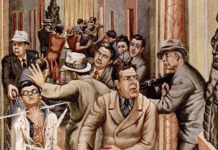


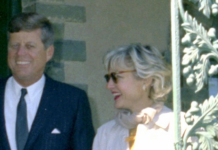




Top Reinigungsfirma in München – schnell, gründlich und preiswert
The more things change, the more they stay the same. Middleton, Epstein, Hastings; suicides and single car accidents. The corruption is deep and historical.
I am not a big fan of headlines that are in the form of a question. It is as if the writer is not 100 % sure that his belief is true, but at the same time he is trying diligently to convince the readers that the answer to the question is “yes”
I am not implying anything, but your comment reminds me of Betteridge’s Law. Please note that the writer of this article is very honest, so I am not implying anything by my reference to
Betteridge Law in the link below:
https://www.techtarget.com/whatis/definition/Betteridges-law-of-headlines#:~:text=Betteridge%27s%20law%20(of%20headlines)%20is,the%20author%27s%20lack%20of%20facts.
I go along with much that is published here, but for me this doesn’t sit right. I’ve no doubt that Johnson just like every other successful politician did many a dodgy deed in his rise to power but the fact that all of these tales of murder rest upon the testimony of one man the ultra-dodgy convicted fraudster Billie Sol Estes gives me great pause.
His targets have solid alibis and whilst no more trustworthy that Billie Sol Estes are certainly not proven worse.
IMO this is just more verbiage around the JFK assassination allowed by the blob simply because any fantasy is better than the truth. That is following the Cuba- Turkiye missile nonsense the Soviet Union was so pee’ed at kennedy and co’s unjustified grandstanding that they roused sleeper Lee Oswald to knock the scumbag off.
Because the US’ three letter agencies were about as effective & efficient as usual, a decision was made to conceal the entire affair lest Joe/Jo Q Public realise what a waste of space they are.
And so here we are.
I have no doubt that Lyndon Johnson murdered both Henry Marshall, covered it up and then murdered John Kennedy and covered it up.
Excellent research and work. I’ve always suspected that LBJ was involved in JFK’s assassination as well.
LYNDON JOHNSON HAD A MURDEROUS ATTITUDE TOWARDS ROBERT KENNEDY
“I’ll cut his throat if it’s the last thing I do.”
Robert Caro describes the LBJ-RFK relationship post 1960 Democratic convention, where RFK had moved heaven and earth attempting to keep LBJ off the 1960 Democratic ticket. Caro:
John Connally, who during long days of conversation with this author was willing to answer almost any question put to him, no matter how delicate the topic, wouldn’t answer when asked what Johnson said about Robert Kennedy. When the author pressed him, he finally said flatly: “I am not going to tell you what he said about him.” During the months after the convention, when Johnson was closeted alone back in Texas with an old ally he would sometimes be asked about Robert Kennedy. He would reply with a gesture. Raising his big right hand, he would draw the side of it across the neck in a slowing, slitting movement. Sometimes that gesture would be his only reply; sometimes, as during a meeting with Ed Clark in Austin, he would say, as his hand moved across his neck, “I’ll cut his throat if it’s the last thing I do.” [Robert Caro, The Passage of Power, p. 140
Phil Ochs was from Ohio, not Texas
Delete this, you were right, he was born in El Paso